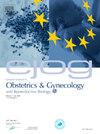Quality of life, sexual function and metabolic parameters of women during 10 years of using the etonogestrel implant
IF 1.7
Q3 OBSTETRICS & GYNECOLOGY
European Journal of Obstetrics and Gynecology and Reproductive Biology: X
Pub Date : 2025-08-05
DOI:10.1016/j.eurox.2025.100421
引用次数: 0
Abstract
Objective
To study the effects on the quality of life (QoL), sexual function and metabolic aspects in women using a subcutaneous implant containing Etonogestrel (ENG-implant) over 10 years of observation period.
Study design
This study was performed from January 2011 to September 2023. A database was set up to collect data from women. Counseling on the ENG-implant to be inserted at the termination of pregnancy, and on insert a new device every 3 years was adopted. The Short Form-36 (SF-36), the Female Sexual Function Index (FSFI) and the Female Sexual Distress Scale (FSDS) questionnaires were used to investigate the QoL, sexual function and sexual distress, respectively, of women at baseline and at 6, 12, 24, 36, 72 and 108-month follow-ups. Blood samples were collected from women to measure metabolic parameters.
Results
32 of 52 (61.5 %) enrolled women completed the study. In summary, after removing the first (at 36th month of use) and the second implant (at 72nd month of use), 44 (84.6 %) and 32 (61.5 %) women asked for the insertion of a new device, respectively. Somatic (p < 0.001) and mental (p = 0.04) categories of SF-36 improved from the 12-month follow-up to the 108-month follow-up (p < 0.001). FSFI scores also increased from 12-month follow-up to the 108-month follow-up (p < 0.001). The improvement of the total scores depended on the gradual increase in each FSFI item (p < 0.001).
FSDS score became statistically significant starting from the 12-month follow-up to the 108-month follow-up (p < 0.001). Although lipid metabolism, fasting glucose, liver function and hemostatic parameters were slightly reduced, they remained within the range of the normal values.
Conclusions
The long observation period of 10 years allowed us to state that the ENG-implant could have neutral effects on metabolic parameters, promote a better quality of life, and improve sexuality in the users. The main limitation of our study was the small number of women enrolled, mainly due to the cost of the implant. These results should be confirmed on a larger sample.
使用依替诺孕酮植入物10年期间女性的生活质量、性功能和代谢参数
目的观察口服依孕酮(engi -implant)对女性患者生活质量(QoL)、性功能和代谢的影响。研究设计本研究于2011年1月至2023年9月进行。建立了一个数据库来收集妇女的数据。对终止妊娠时植入的ENG-implant进行咨询,每3年植入一个新的装置。采用短表36 (SF-36)、女性性功能指数(FSFI)和女性性困扰量表(FSDS)分别在基线和随访6、12、24、36、72和108个月时对女性的生活质量、性功能和性困扰进行调查。从女性身上采集血液样本来测量代谢参数。结果52名入组妇女中有32名(61.5 %)完成了研究。总之,在移除第一个植入物(使用第36个月)和第二个植入物(使用第72个月)后,分别有44名(84.6 %)和32名(61.5 %)女性要求插入新的植入物。从随访12个月到随访108个月,SF-36的躯体(p <; 0.001)和精神(p = 0.04)类别均有改善(p <; 0.001)。FSFI评分从12个月随访到108个月随访也有所增加(p <; 0.001)。总分的提高取决于FSFI各项目的逐渐增加(p <; 0.001)。随访12个月至108个月FSDS评分差异有统计学意义(p <; 0.001)。脂质代谢、空腹血糖、肝功能、止血指标虽略有下降,但仍在正常值范围内。结论经过10年的长期观察,ENG-implant对患者的代谢参数具有中性影响,可以提高患者的生活质量,改善患者的性行为。我们研究的主要限制是纳入的女性人数较少,主要是由于植入物的成本。这些结果应该在更大的样本上得到证实。
本文章由计算机程序翻译,如有差异,请以英文原文为准。
求助全文
约1分钟内获得全文
求助全文
来源期刊

European Journal of Obstetrics and Gynecology and Reproductive Biology: X
Medicine-Obstetrics and Gynecology
CiteScore
2.20
自引率
0.00%
发文量
31
审稿时长
58 days
 求助内容:
求助内容: 应助结果提醒方式:
应助结果提醒方式:


